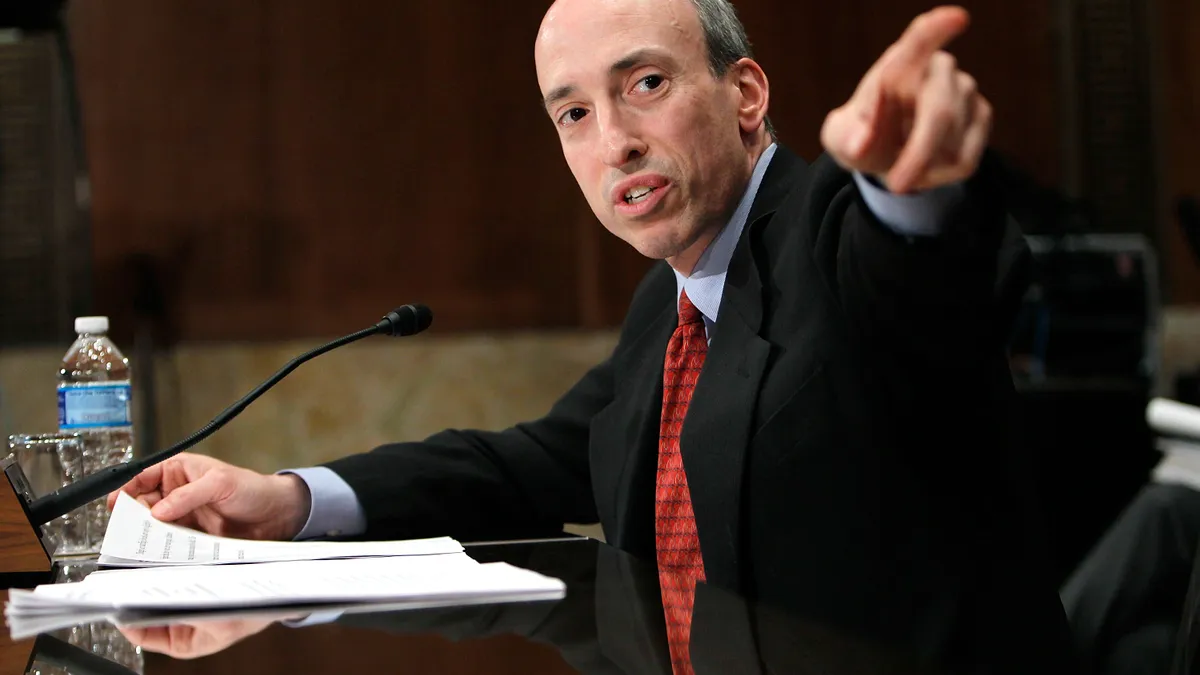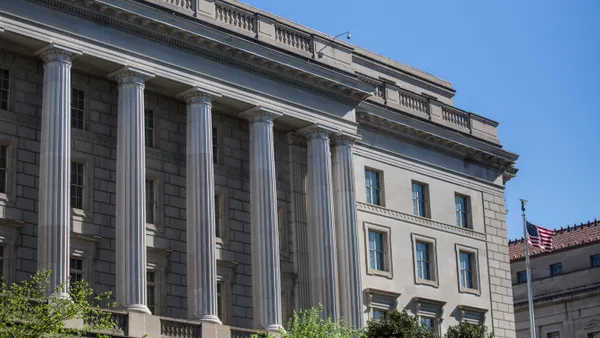Dive Brief:
- Securities and Exchange Commission Chair Gary Gensler predicted some trading in financial contracts linked to the London Interbank Offered Rate (LIBOR) will become “choppy,” but warned that regulators will not waver on the Dec. 31 deadline for transitioning to a new reference rate in financial contracts.
- “The lessons around the globe, decade after decade, when you have an infirm index — one that really no longer reflects the market — the way to move to another is you actually have to set a deadline and hold to that deadline,” Gensler said Monday. “After 12-plus years of fussing about this, there’s a key deadline.”
- The switch from LIBOR to a new benchmark rate “will happen with quite a high certainty and it will happen in a very short period of time” because some institutions will wait until the final weeks of 2021 to make the transition, Gensler said.
Dive Insight:
The SEC and other regulators are pressing financial institutions and other companies to speed their shift by year-end from LIBOR, the reference rate for trillions of dollars in mortgages, derivatives, business loans and other financial contracts worldwide and the subject of a manipulation scandal in 2012.
The regulators have endorsed the Secured Overnight Financing Rate (SOFR), which is based on overnight repurchase agreements secured by U.S. Treasurys.
The final fixings for most LIBOR rates — including one-week and two-month U.S. dollar LIBOR — will be made on Dec. 31, 2021, but other U.S. dollar tenors may continue until June 30, 2023.
SOFR, while based on high transaction volumes, has not eclipsed LIBOR because it currently lacks some of LIBOR’s appealing traits.
LIBOR is derived from London banks' estimates of what they would be charged when borrowing from other banks. SOFR, however, does not reflect credit risk.
Also, the LIBOR rate can be forecast three, six and 12 months into the future. SOFR has only recently gained credibility for use in a term structure that enables corporate treasurers and financial institutions to make forward-looking rate calculations. In July, the Alternative Reference Rates Committee (ARRC), a panel including financial institutions and the Fed, endorsed a series of term rates tied to SOFR.
“A lot of corporate treasurers have come in and expressed their view that they’re looking for banks to start to quote in SOFR and, well hopefully, also in term SOFR,” Gensler said in an ARRC-sponsored webcast. “That’s within our mission, so I will speak up from time to time if it’s squarely in our mission.”
Some market instability from the end of LIBOR is possible later this year, Gensler said. “Most of the market adjusts pretty smoothly,” he said. In “some it gets choppy because you can’t anticipate everything and some people, frankly, wait for the last time.”
Gensler urged institutions not to put off the LIBOR transition to “the middle of the Christmas holidays — ‘Oh, my God, how are we going to handle this?’ — or to knock on the door of the official sector and say, ‘can we have an extension?’ because I really don’t see that happening.”















